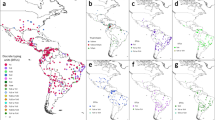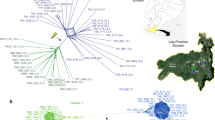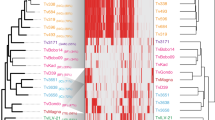Abstract
THERE are different theories about the significance of polymorphism in trypanosomes of the brucei group. According to Robertson1, stumpy forms elongate into slender forms, which divide, giving rise again to stumpy forms. Fairbairn and Culwick2 separated slender, intermediate and stumpy forms as three distinct entities, which they believed were produced by the sexual process of syngamy.
This is a preview of subscription content, access via your institution
Access options
Subscribe to this journal
Receive 51 print issues and online access
$199.00 per year
only $3.90 per issue
Buy this article
- Purchase on Springer Link
- Instant access to full article PDF
Prices may be subject to local taxes which are calculated during checkout
Similar content being viewed by others
References
Robertson, M., Report of the Sleeping Sickness Commission, 13, 104 (1913).
Fairbairn, H., and Culwick, A. T., Ann. Trop. Med. Parasit., 40, 421 (1946).
Hoare, C. A., Parasitology, 46, 130 (1956).
Author information
Authors and Affiliations
Rights and permissions
About this article
Cite this article
WIJERS, D. Polymorphism in Human Trypanosomiasis. Nature 180, 391–392 (1957). https://doi.org/10.1038/180391a0
Issue Date:
DOI: https://doi.org/10.1038/180391a0
Comments
By submitting a comment you agree to abide by our Terms and Community Guidelines. If you find something abusive or that does not comply with our terms or guidelines please flag it as inappropriate.



